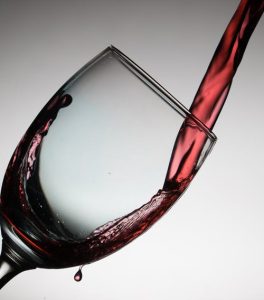The Valentine-day is approaching, due to the COVID-19 situation and the winter time, we are more prone to retire into our shell and go out less from home. So these facts can increase the chance of opening a bottle of wine for lunch or for close family, even virtual encounters. To get the most out of the myriad flavors in a bottle, the way we pour it can make a difference.
It’s all about aeration. Some wines benefit from breathing, because it helps evaporate harsh aromas and sulfur compounds. The aeration can also promote oxidation, which can add nutty or fruity flavors to the palate.
Other wines are best served with minimal aeration — their flavors can get washed out or become unsavory from the evaporation and oxidation processes.
So, how should you pour wine? Let’s create a simulation and find out.
Simulating the Aeration from Pouring Wine
To create the simulation, first we need to build a geometry that matched oue favorite wine glass and bottle. This wasn’t too hard if we have access to both — and calipers — at home.

With the geometry set, we have to import it into Ansys Fluent. Using the streamlined multiphase setup, we input the properties and initial conditions for the wine and air in the bottle. Then we use the algebraic interfacial area density (AIAD) model to simulate the flow of the two phases and how they interact at the interface.
We could have also combined the AIAD model with a population balance model. If we were to do that, the simulation would be able to keep track of the size and distributions of all the air bubbles. I then post-processed the simulation using Ansys EnSight and Ansys Speos Live Preview (keep your eyes open for a future workflow). From the post-processed video, it was clear that the air and wine didn’t mix that much when poured from the bottle.
Therefore, if we are drinking a wine that benefits from aeration, we might want to use a decanter or a special bottle attachment that increases the surface area of the wine exposed to the air. For wines that require no aeration,we can just pour those straight from the bottle to the glass.
How Simulating Wine Filling a Glass Relates to the Real World
How can this wine bottle simulation apply to the real world?
The AIAD model and its abilities make it perfect to simulate the flow of crude oil – which contains gases, liquids and particles. With the help of these simulations, we can predict the interactions between the phases to ensure optimal flow through the pipeline.
Returning to food and beverages, the model can also be used to simulate a soda fountain. Engineers can use the simulation to optimize how soda, a complex bubbly flow, fills a cup.

Now that we have answered the mysteries of pouring wine, we wish pleasant and responsible wine drinking for everyone! Remember to always drink alcohol in moderation, with responsibility!
If you have any question regarding computational fluid dynamics or mechanical simulations, please feel free to contact us at sales@econengineering.com e-mail address!
Source: Ansys.com